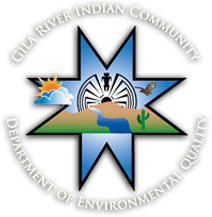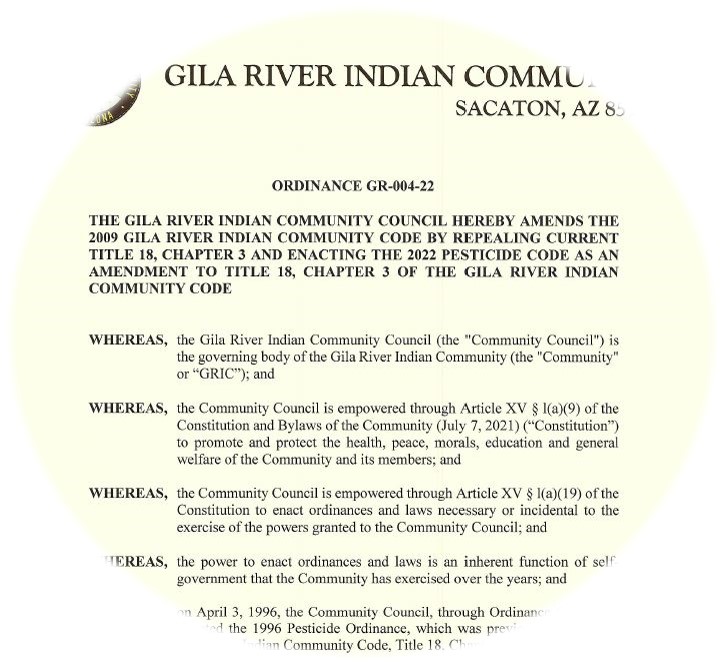BACKGROUND
As an agricultural community, the need to regulate pesticide use was formalized in 1981 when the Gila River Indian Community (GRIC) adopted its first pesticide code. Doing so established the Pesticide Control Office who later sought support from the Environmental Protection Agency through a cooperative agreement.
This effectively made GRIC one of the first tribes in the nation to address the potential risks caused by pesticides. In 1995, the program was housed under the newly created Department of Environmental Quality and the pesticide code was revised. Through further amendments and revisions, the pesticide code expanded to enhance provisions regarding non-agricultural pesticide activities and reflect federal rule changes.
Since its inception, the Pesticide Control Office has worked to reduce pesticide related risks, such as illness and injury to pesticide workers, handlers, applicators, and the Community’s residents, employees, and visitors.
The pesticide control office accomplishes this in part by:
- Managing an Environmental Protection Agency, Pesticide Consolidated Cooperative Agreement.
- Providing a permitting mechanism for pest management businesses, growers and seed treaters.
- Providing a registration mechanism for sellers, producers and pest control advisors.
- Providing a certification mechanism for applicators applying general use and restricted use pesticides.
- Providing pesticide safety training for Community Applicators.
- Providing Worker Protection Standard training for agricultural workers and handlers.
- Conducting Community outreach and compliance assistance.
- Enforcing Federal and Tribal law through compliance inspections based upon a neutral inspection scheme.
To align itself with the Community’s values and the Department’s strategic priorities, the program has identified the following programmatic priorities:
This priority is comprised of three components:
Compliance Assistance: The Office is committed to providing its customers; members of the Community, employees of the Community and its enterprises, and its regulated community; with clear and easy to access information on how to comply with tribal and federal pesticide laws. Such information and guidance are often referred to as “compliance assistance”.
Compliance Monitoring: A key factor in protecting the environment is assuring compliance with environmental regulations through effective monitoring and compliance assessment. Unless there is compliance, laws and regulations have little impact.
Enforcement Response: An effective compliance monitoring program will detect violations. An enforcement response policy instructs the program on how to respond to these violations in a timely and appropriate manner. Timeliness is very important. A prompt enforcement response is more effective in deterring future violations than a long delayed response of greater severity.
Certification and training at the national level revolves around the certification of Restricted Use pesticide applicators. For the Office’s purposes, this priority also encompasses the certification and training of GRIC General Use pesticide applicators.
Through its adoption of GR-004-22, the Community has reestablished its commitment towards educating the public in the safe use of pesticides. In addition, Integrated Pest Management is the preferred strategy when addressing all pest control decisions.
The office remains committed to building capacities through collaborative efforts both internally and externally with its stakeholders. These efforts and the partnerships among various agencies to facilitate government to government communication are necessary to ensure that the program remains robust, that tribal views are expressed and communicated at the appropriate level, and that initiatives and priorities are agreed upon which ensure a win-win scenario.
Ultimately, the program strives to ensure services provided to the Community continue to be of value, culturally sensitive, and technologically forward thinking.


